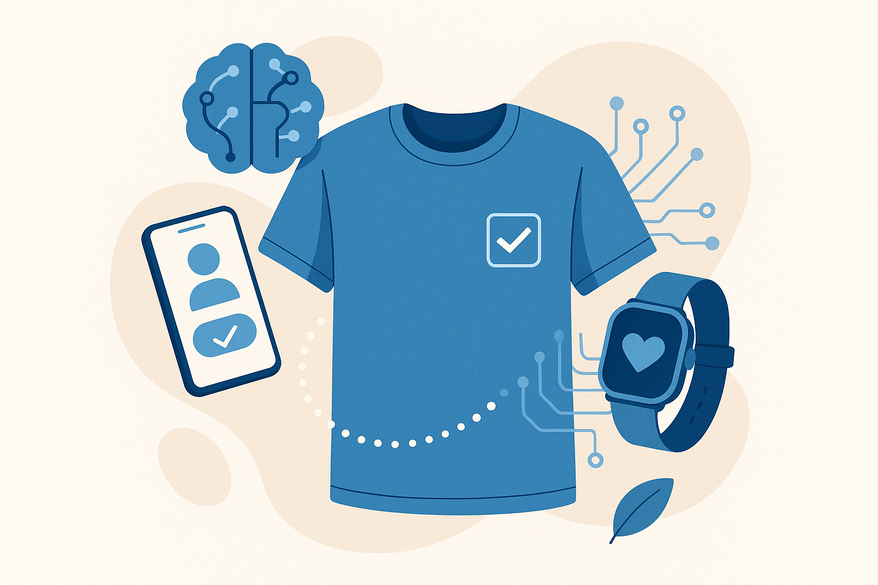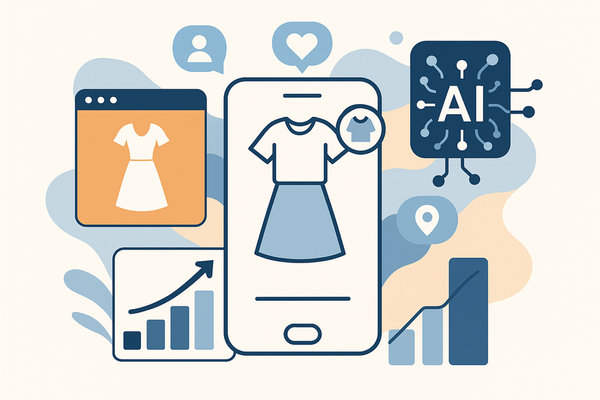Exploring the Future of AI Powered Wearable Styling
Discover how AI powered wearable styling is revolutionizing fashion with smart clothing that adapts to your style and comfort in real time.

Estimated reading time: 8 minutes
Key Takeaways
- Convergence of technologies: AI, wearable tech, and smart clothing combine to deliver context-aware style.
- Adaptive garments: Real-time personalization of color, cut, temperature and comfort based on biometric and environmental data.
- Real-world examples: From self-heating jackets to sensor-embedded workout pants and contactless payment rings.
- Benefits: Enhanced personalization, functionality, aesthetic appeal and industry innovation.
- Challenges: Data privacy, cost barriers, design trade-offs and consumer acceptance.
Table of Contents
- Background and Context of Smart Clothing
- How AI Powers Wearable Technology
- Real-World Examples of Smart Clothing
- Benefits of Wearable Technology
- Challenges for Smart Clothing
- Future Outlook for Wearable Technology
- Conclusion: AI Powered Wearable Styling
Background and Context of Smart Clothing
The evolution of smart clothing began with basic fitness trackers and smartwatches that monitored steps, heart rate, and sleep patterns. Early devices focused on health metrics rather than appearance, but paved the way for garments embedded with sensors for both data and design integration wearable technology. As design and comfort became priorities, wearables transitioned from functional bands to fashion-forward pieces—blending fabric technology, wireless modules, and AI-driven insights AI wearable technology trends & applications. AI powered wearable styling accelerates this shift by interpreting biometric data, movement patterns, and personal preferences to recommend colors, cuts, or adaptive features like temperature regulation.
How AI Powers Wearable Technology
Machine learning and deep learning algorithms analyze data from onboard sensors—tracking biometrics, motion, moisture, and environmental inputs—to power adaptive clothing AI wearable technology trends & applications. By continuously training on user behavior, AI models refine style suggestions and functional adjustments. You can compare leading best AI styling apps 2025.
- Temperature control: phase-change materials or embedded Peltier modules modulate warmth or cooling based on skin-surface readings.
- Fabric stiffness: shape-memory fibers alter flexibility for sports or formal settings as detected by movement sensors.
- Moisture management: hydrophobic weaves and active wicking adjust to sweat levels and humidity. Future of wearable AI: what comes after smartwatches
Trend-prediction capabilities harness global social media signals, runway data, and personal style history to suggest outfits that match current tastes and occasions. AI curates looks by evaluating pattern popularity and color palettes, then personalizes suggestions at the garment level—stitch, shade, or silhouette how AI impacts wearable technology market.
Real-World Examples of Smart Clothing
Smart jackets: Embedded thermal sensors and micro-heaters automatically regulate inner temperature when the external climate shifts, using AI-driven feedback loops Future of wearable AI: what comes after smartwatches.
Sensor-embedded pants: Electro-textile sensors measure muscle activation and joint angles during workouts, offering real-time coaching via a paired mobile app Future of wearable AI: what comes after smartwatches.
Fashionable fitness wearables: Sleek wristbands that double as style accessories while tracking heart rate, sleep quality, and GPS—all within e-textile bands that match seasonal color trends AI wearable technology trends & applications.
Contactless payment rings and smart jackets: NFC chips integrated into garments and accessories facilitate tap-to-pay transactions, blending convenience with couture how AI impacts wearable technology market.
Interactive AR/VR smart glasses: AI recommends styling combinations, displays outfit history, or projects virtual outfits for preview—enhancing shopping experiences and entertainment. Learn about the smart clothing style advisor revolution.
Benefits of Wearable Technology
- Personalization: AI tailors style advice based on context-aware insights—time of day, weather, activity level, and social setting AI wearable technology trends & applications.
- Enhanced functionality: Real-time posture correction, hydration reminders, environmental hazard alerts, and adaptive comfort fabrics that change porosity or insulation on demand Future of wearable AI: what comes after smartwatches.
- Aesthetic appeal: Designers integrate smart modules discreetly into avant-garde silhouettes, creating visually striking yet functional apparel how AI impacts wearable technology market.
- Industry innovation: Fashion houses leverage AI analytics for trend forecasting, driving inclusive, responsive, and interactive collections that resonate with diverse consumer groups Future of wearable AI: what comes after smartwatches.
Challenges for Smart Clothing
- Data privacy: Continuous biometric data collection raises concerns about security, consent, and ownership. Manufacturers must implement end-to-end encryption and adhere to GDPR-style regulations Future of wearable AI: what comes after smartwatches.
- Cost barriers: High-precision sensors and AI R&D drive up retail prices, limiting mass adoption. Economies of scale and open-source AI models may lower entry costs over time.
- Fashion vs. function: Balancing tech modules with drape, weight, and washability challenges designers to blend utility without sacrificing style.
- Consumer attitudes: Adoption depends on perceived reliability, battery life, and aesthetic value of tech-enhanced garments how AI impacts wearable technology market.
Future Outlook for Wearable Technology
Forecast rapid advances in sensor miniaturization, battery chemistry, and AI compute power that will drive deeper daily-life integration. Intuitive garments that anticipate user needs—like jackets that preheat before stepping outside—and autonomous style fabrics that morph color or pattern on command, guided by AI awareness of calendar events and social context how AI impacts wearable technology market. Material science breakthroughs such as self-healing textiles, bio-derived conductive fibers, and flexible displays woven into garments will redefine fashion innovation Future of wearable AI: what comes after smartwatches. AI will reshape design workflows, retail experiences (virtual try-ons, AI-driven personal shoppers), and personal expression—making smart clothing an essential facet of 21st-century style.
Conclusion: AI Powered Wearable Styling
AI powered wearable styling merges advanced machine intelligence with innovative fabric engineering to deliver personalized, context-aware fashion experiences. Smart clothing is transforming how consumers select, interact with, and benefit from their apparel—offering adaptive comfort, health insights, and trend-aligned aesthetics. As the industry addresses privacy, cost, and design challenges, the next decade will see truly intelligent garments that learn, evolve, and express individual style. Explore current AI-driven wearable innovations and embrace the future of intelligent fashion—your wardrobe will thank you.
FAQ
- What is AI powered wearable styling?
AI powered wearable styling combines machine learning algorithms and embedded sensors in garments to personalize fit, color, temperature and functional alerts based on real-time data. - How do smart garments adapt in real time?
They use onboard sensors to track biometrics and environmental conditions, then AI models analyze that data to adjust features like heating, moisture wicking or stiffness. - What are the main benefits and challenges?
Benefits include deep personalization, multifunctionality and fresh design possibilities. Challenges involve data privacy, higher costs, battery life and balancing tech with style. - When will smart clothing become mainstream?
As sensor miniaturization, battery improvements and cost reductions continue, we expect broader consumer adoption within the next 5–10 years.





